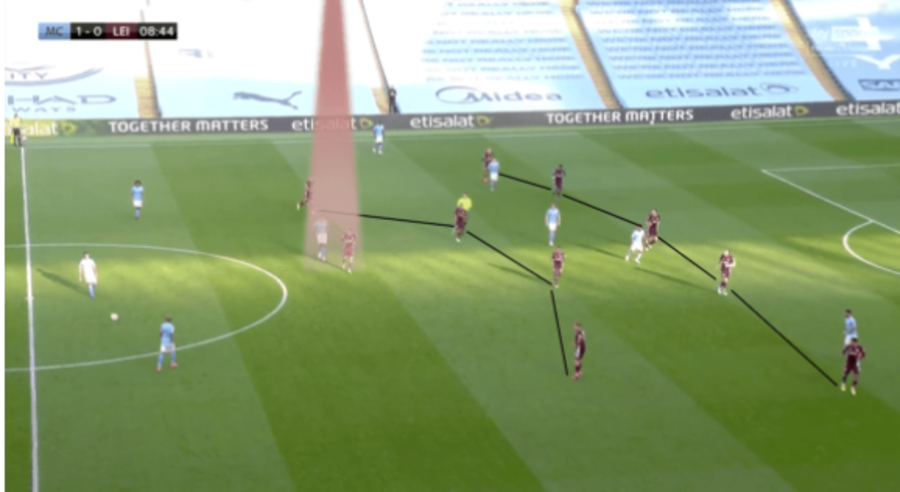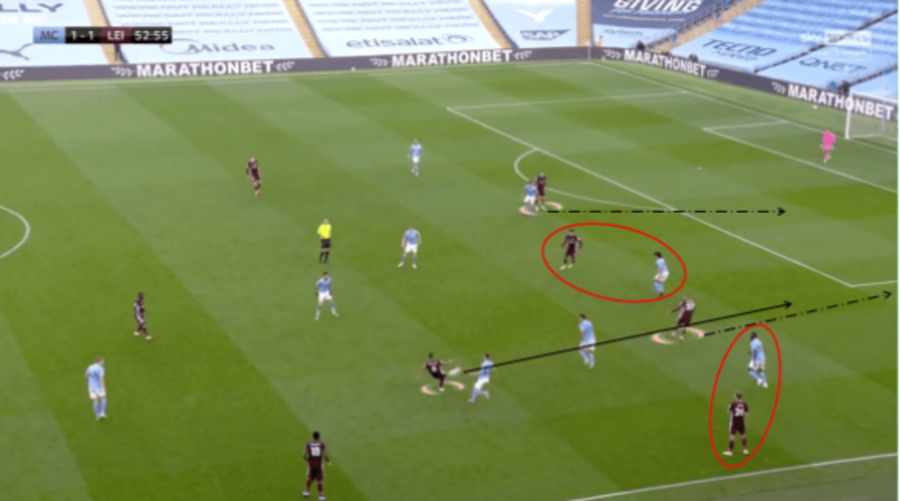Less than a month ago, Manchester City fell short to a stubborn Lyon at the quarter-final stage.
In that match, the French side capitalised on Man City’s high defensive line and attack the space that was available behind defenders Eric Garcia and Aymeric Laporte.
A month later, Pep Guardiola’s side welcomed Brendan Rodgers’ Leicester City to the Etihad with the intention of starting their Premier League season strong.
Man City: Squad, FC Ratings, Matches, Formations
Leicester: Squad, FC Ratings, Matches, Formations
But instead, they found themselves on the back foot. We will examine how Leicester made the most of Man City’s high defensive line and how they provoked errors from the opposition defence.
How Leicester made the most of Man City’s problems
Leicester came into this match as the underdog and they ended the match still being the worst side in terms of stats - apart from the scoreline. They registered seven shots and held 28% of possession, but scored five goals. But how can a side who sat back for the majority of the match manage to score three penalties and two goals against a side who dominated possession?
Firstly, they had an unfamiliar 4-5-1 lineup, different from their usual 4-1-4-1 formation, with Mendy sitting in between the defensive lines. Secondly, the decision of keeping two attacking wing-backs in James Justin and Timothy Castagne out wide instead of choosing to use two defensive full-backs was a key decision. Thirdly, Dennis Praet was used as a right winger in this match ahead of a player who can provide more pace, like Ayoze Perez, and he provided defensive solidity and creativity from the right-hand side.
The visitors made the situation tougher by instructing Vardy to mark Rodri every time City attempted to play out from the back. This blocked the home side from progressing the ball through the central area since there were no players who were able to link the centre-backs with the attackers up front. They were forced to distribute the ball wide, but Leicester’s defensive shape was on hand to shift towards the ball and overload that area before City players could attack the wide space.

Their interceptions map displays their intention of defending deep inside their defensive third as most of their interceptions were registered either inside or close to the 18-yard box.
In their attacking phase, Leicester relied heavily on counter-attacks since they were not able to progress the ball into City’s defensive third from a positional attack. When City were off the ball, they preferred to press the opposition high up the pitch and attempted to win the ball high up the pitch. Leicester also knew about this, which was why most of Schmeichel’s goal-kicks were headed towards right-back Justin.
Both Justin and Castagne are attacking wing-backs and they are capable of overlapping forwards with pace. This allowed Leicester to have numbers when they created counterattacking situations while beating City’s defending numbers with pace.
Vardy’s second goal of the match is a good example of how a player’s positioning benefitted Leicester significantly. Since Praet is not a natural winger who has good pace to beat the opposition’s full-back, he was tasked to pin Mendy down and this allowed Castagne to overlap. With Justin already pinning down Ake, the former Atalanta player was able to receive the ball from Tielemans freely and cross into the box for Vardy.
The Englishman’s role was also crucial for Leicester in this match as his trait of making runs in behind the opposition’s defenders helped dragged City’s defensive line back towards their goal and created space for his teammates to arrive into the box.
As shown in both situations, he has the tendency of sitting slightly in front of City’s centre-backs and used his pace to beat his man to move towards the box along with his teammates. His progressive runs were also the cause of Leicester’s first two penalties as both Walker and Garcia were forced into bringing him down inside the box.

Conclusion
Many would have expected Manchester City to come out of this match as comfortable winners with at least two or three goals. But, on the field, the away side even coming away with five goals, including three penalties conceded by three of City’s defenders. It proved that City are not able to find a solution yet to a problem that has hurt them in the past.
While many would look at the match and criticise Rodgers’ decision to approach the match in a negative way by setting up a deep 5-4-1 defensive block, his counterattacking masterclass hit Man City in their worst spot and brought them the reward that they deserved.

 Kevin De Bruyne
Kevin De Bruyne  Jamie Vardy
Jamie Vardy  Leicester
Leicester  Man City
Man City 










